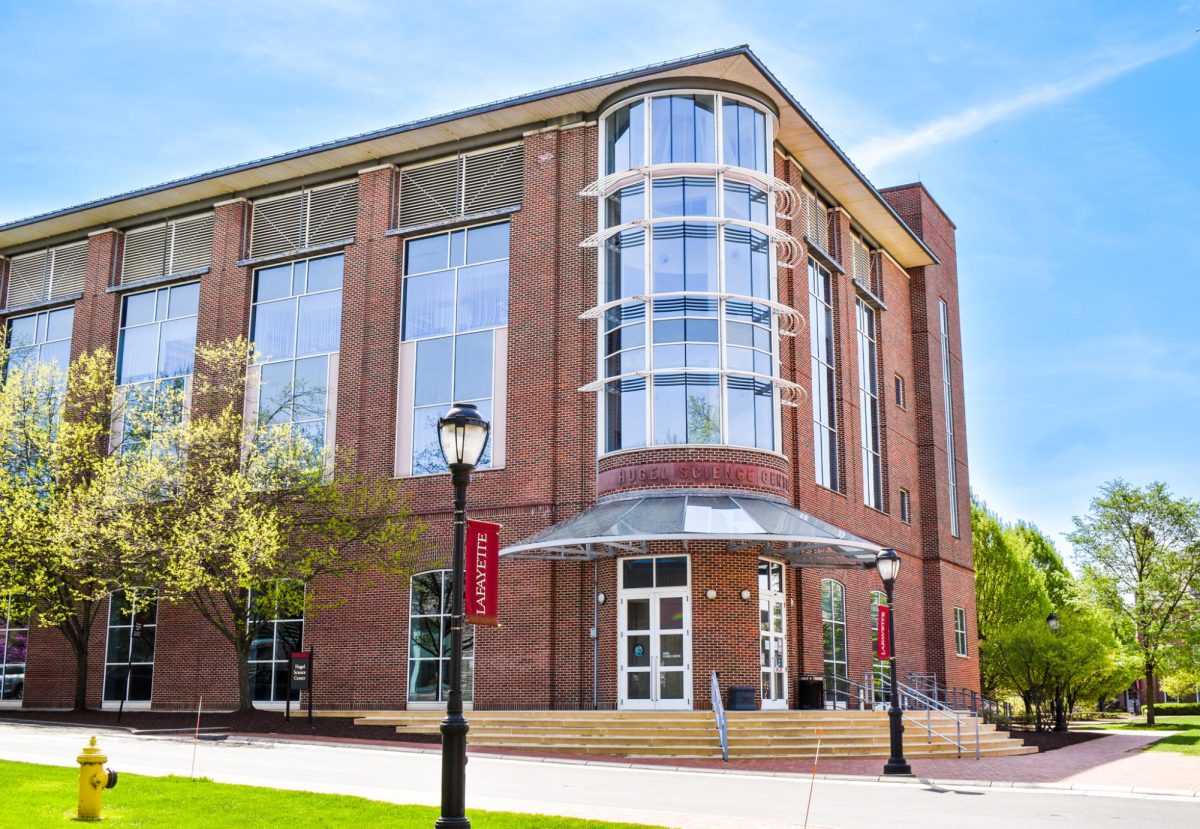After 50 years of no contact, the United States and the moon have decided to get in touch again. The lunar landing of the “Odysseus” spacecraft last Friday marks the first time Americans have sent a machine to the moon since the 1972 Apollo 17 mission — the last time humans visited the moon.
While the moon remains far from home (238,900 miles, to be exact), students can reach for the stars from Hugel Science Center, home to Lafayette’s physics department and astronomy concentration.
“I’ve always been interested in space, and even though Lafayette doesn’t have an astronomy major, I think it’s nice that you’re still able to have a concentration,” said Kira McCracken ‘25, a physics major with an astronomy concentration.
Last year, one in five graduating physics majors had an astronomy concentration, according to David Nice, professor and physics department head.
For this cosmic addition to their diploma, physics majors must take at least two of the four available astronomy courses, though the requirement differs between a bachelor of science and a bachelor of arts in physics.
Two introductory astronomy courses, PHYS 104 and PHYS 108, attract a mix of physics and humanities majors, according to Stephanie Douglas, assistant professor of physics. These introductory courses fulfill the Natural Science Outcome requirement of the Common Course of Study.
“It’s a whole wide range of abilities and interests, but it ends up being a really fun experience to get all sorts of different people in the classroom,” Douglas said.
Douglas taught “Observational Astronomy,” a 300-level course, in the fall semester for the first time. Part of the class involved occasional naked-eye or telescope observation nights when the weather was clear.
The other upper-level astronomy course, “Astrophysics,” was co-taught by Nice and fellow physics professor Brooks Thomas this past semester.
“We did it more as a course that was half astrophysics, half cosmology,” Thomas said, the latter of which he studies in his research on dark matter.
“There really isn’t astronomy outside of doing physics,” Nice said.
The class had just nine students last semester. The smaller class sizes of the advanced astronomy courses are “nice,” McCracken said, “because you really get to know everybody and it makes especially the labs more fun.”
Astronomy courses have been offered at Lafayette almost since its founding. According to “The Biography of a College” by David Bishop Skillman, there was a National Astronomy and Navigation program during the 1835-1836 academic year. In 1864, the Astronomical Observatory was built on the current ground of Colton Memorial Chapel to study astronomy. In 1884, astronomy was a required course for all students.
Currently, the physics department is “trying to be more deliberate and regular about teaching advanced astronomy classes,” according to Nice.
Nice said that astronomy courses used to be taught irregularly before an increase in student interest. However, students interested in astronomy prior to this had the opportunity to participate in relevant research with faculty members — and they still do.
With Douglas, McCracken has researched binary star systems, in which two stars orbit around each other based on gravitational pull, since the summer before her sophomore year.
“Binaries are cool to study,” McCracken said, “because [they] can show you how stars evolve under the influence of each other.”
Student-faculty research is what Nice sees as “the most important part of doing astronomy” and “the best way of learning any field.” Nice earned recognition this past year within his field for a 15-year research collaboration studying pulsars, fast-rotating neutron stars that emit radio waves, to detect gravitational waves.
“I think it’s really exciting for students to be able to engage in forefront research, and I think it’s really fun for us,” Thomas said.
Editor’s note: A previous version of this article mistakenly referred to astronomy as “astrology” in one instance. Correction made 3/1/24.




































































































